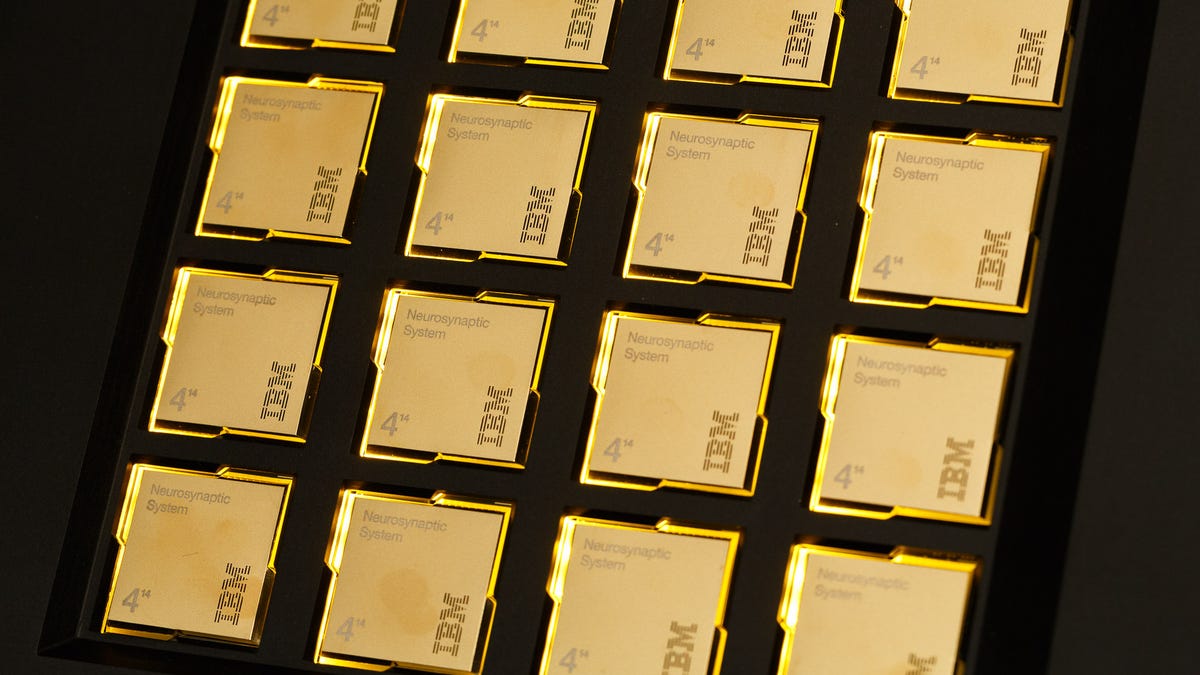Samsung turns IBM's brain-like chip into a digital eye
By emulating the way the human brain works researchers hope to build faster, more efficient computer chips.

IBM created a computer chip that works like a brain. Now, Samsung has used it to create a biologically inspired digital eye.
The IBM chip, called TrueNorth, is built of 4,096 tiny computing cores that form about a million digital brain cells and 256 million connections. Together they act like the brain's neurons, sending short messages to one another to process data.
The design, known as neuromorphic computing, marks a dramatic departure from traditional chips that run software packaged into strict sequences of instructions. Neuromorphic chips are also optimized to get large amounts of processing done without consuming as much power as traditional chips.
Samsung has adapted TrueNorth into its Dynamic Vision Sensor that processes video imagery quite differently than traditional digital cameras.
"Each pixel operates independently" and pipes up only if it needs to report a change in what it's seeing, said Eric Ryu, a vice president of research at the Samsung Advanced Institute of Technology. He spoke Thursday at an IBM Research event celebrating the 30th anniversary of its Almaden lab on the outskirts of San Jose.
The result is a camera that can keep track of what's going on at a remarkable 2,000 frames of video per second. Ordinary digital cameras typically max out at 120fps. The higher speed is useful for creating 3D maps, safety features on self-driving cars and new forms of remote controls that recognize gestures.
Samsung demonstrates how a brain-like chip can be used to sense hand motions to control a TV.
Samsung's TrueNorth-based system is efficient, consuming about 300 milliwatts of power, Ryu said. That's about a hundredth of a laptop processor and a tenth of a phone processor. By comparison, he said, the human brain can handle some tasks with 100 million times less power than a computer.
"There is a huge gap between biology and modern silicon technology," Ryu said.
A small computer board houses IBM's TrueNorth chip.
Samsung demonstrated the chip recognizing hand gestures so a person could control a TV. It recognized hand waves, finger waves, closed fists and finger pinches from about 10 feet away.
Because the chips run cool, Samsung expects to be able to stack them together into bigger groups. IBM already gangs them together into 16-chip packages that come closer to matching the scale of the roughly 86 billion neurons in a brain.
IBM is trying to get partners to explore what's possible with TrueNorth. Other researchers noodling with TrueNorth spoke at the IBM event.
One is the Air Force Research Laboratory, which is investigating TrueNorth for use in identifying unusual events in video, detecting computer attacks, turning printed text or audio into searchable data and summarizing it, and giving drones autonomy when in flight but not connected to a human controller at a distant military base.
A drone "has to able to know where it is, what to do next, where to fly next," said Qing Wu, a principal electronics engineer at the Air Force lab. "We need very power-efficient processing on board. That's where we believe IBM's TrueNorth chip can help dramatically."
The Air Force is developing a control system that marries a traditional computer with a TrueNorth system, Wu said, a combination that would be analogous to the hemispheres in the brain.
"The left brain is good at sequential processing and math, and the right brain is good at inference and understanding of the situation," Wu said.
The Lawrence Livermore National Laboratory, too, is using TrueNorth. The research facility in Livermore, California, has tested it successfully to detect cars in cluttered situations in video that is shot from above, sort of like video from a satellite or surveillance aircraft. The lab is also working on integrating it with traditional supercomputers.

